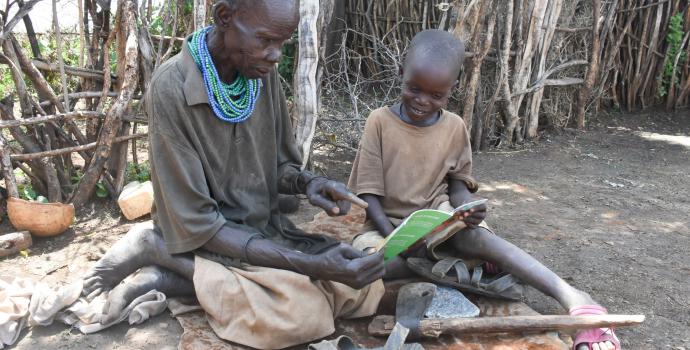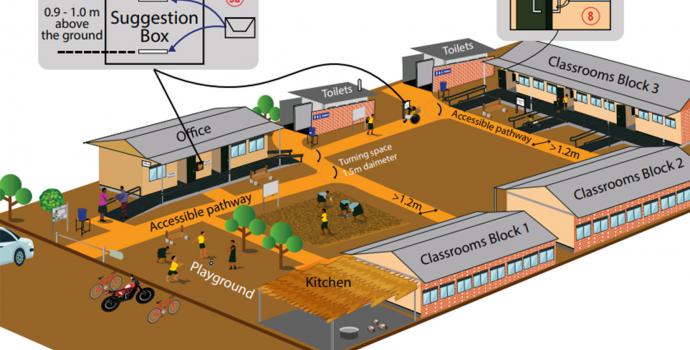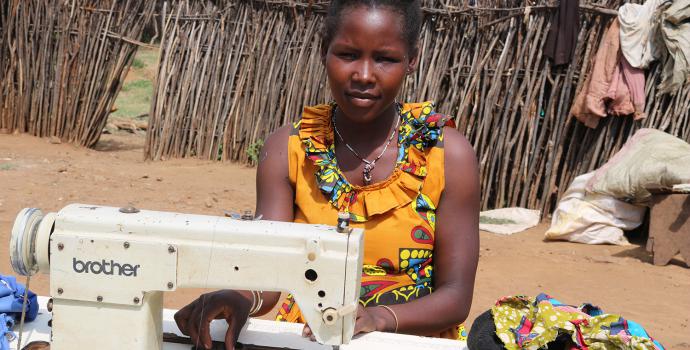Are our children learning at home?

It’s more than three months since schools closed in Uganda due to COVID-19, leaving 15 million children out of school, and there is no news on when they will reopen.
The government, NGOs and communities have been exploring different methods to try and help children keep learning while they are at home – from printed learning packs to radio and TV programmes. These have had some limited impact, but our experience so far shows that there are a lot of gaps and challenges. The reality is that most children are not learning effectively while schools are closed.
So what have we learned so far?
The poorest and most vulnerable children are being left behind.
“Many children still do not have study materials. We don’t have TVs or electricity. How should we learn and what will be done to support us while schools are closed?” – Mary, 16, from Karamoja
The National Curriculum Development Centre (NCDC) worked quickly to produce the first set of learning packs by early May, covering core subjects in all primary and secondary grades. However, many children have still not received them. 57% of refugee children who were previously enrolled in primary school have not received any materials – and the same is true for millions of Ugandan children. Distribution urgently needs to be increased across the country.
Investment should be prioritised in methods of learning that are accessible to the poorest and most marginalised children. TV and online learning can be useful, but is inaccessible to the vast majority of children, especially outside of main towns.
Radio is more widespread, and radio learning – either through pre-recorded lessons or with teachers broadcasting directly from the studio – has had some impact. However, even radio is very limited in many areas. Recent assessments found that 80% of families in rural northern Uganda do not have radios. Parents who do have radios often take them to the fields or work, leaving children unable to listen at home. The Government’s announcement in June that it will distribute radios to all homes is extremely welcome but must be done as a matter of urgency if it is to have an impact.
Children also report that they are struggling to keep up with radio lessons as teachers move too quickly. Teachers need to be trained and mentored on this model of teaching, which is very different to what they are used to.
Children with disabilities also need more support. NCDC also developed an inclusive learning pack with extra-large font and braille, but it has not yet been finalised or disseminated.
We need to utilise teachers more effectively.
Children need some adult support. Many learners cannot read the materials (33% of primary school children cannot read with comprehension). In some cases, parents are also supporting their children to go through the study packs, but this is not always possible. Many parents are at work all day and have little spare time; others are illiterate and did not complete primary school themselves so cannot understand the materials.
Teachers should continue to be paid but should be better utilized to carry out small-scale community learning. The printed packs have proved most effective when teachers are able to visit homes and sit with the children to explain and answer questions.
Several districts have allowed teachers to do this or hold small groups under trees, even just once a week for quick sessions of around 45 minutes. Such visits can be done with social distancing and wearing face masks, and in accordance with Ministry of Health guidelines, and would have a significant impact on children’s learning. The Government should issue a circular to all districts, formally approving and encouraging this approach to be scaled up.
Regular new material is needed
To get them out quickly, and as school closure was initially hoped to be temporary, the first home learning packs included revision materials on what had already been taught, rather than introducing new concepts. After more than three months of school closure, there is an urgent need to move ahead with developing a second round of home learning packs covering new content with well-structured lessons designed to meet individual needs and making accurate and productive use of assessment
Children need routine
Without the routine of school, children are finding it difficult to make sufficient time for study. During the day most children are expected to be busy with household chores – or in some cases going out to work to earn an income, as we are seeing an increase in child labour since schools closed. In the evening many families do not have lights or electricity, which makes it almost impossible to study in the dark.
“I try and revise my books under the tree before it gets dark, but during the night I cannot read because it’s too dark inside.” – Luc*, 16, Kyangwali refugee settlement in western Uganda
Distance learning can be expensive
The Government should negotiate uniform discounted rates with radio and TV stations for broadcasting education programming during COVID-19. The high costs of procuring airtime makes these options unsustainable if schools remain closed for much longer.
Creative solutions can be found
In areas where there are no radio stations, such as some of the refugee settlements, we have constructed “community radio” – masts with loudspeakers to broadcast over a wide radius – to deliver lessons and general health messaging. These should be invested in while schools remain closed. Community libraries can also offer another solution.
Much of the focus has been on older children, missing out the younger ones. Radio learning, for example, has so far focused on upper primary classes. There needs to be more creative and diverse programming that lower primary children can listen to together with parents. NGOs have already developed content for pre-primary children aged 3-6, and this could be adapted.
Ultimately it’s not about one single method, but integrating different methods – such as small groups with teachers, self-study packs and radio sessions – so they can complement each other and be most effective.




